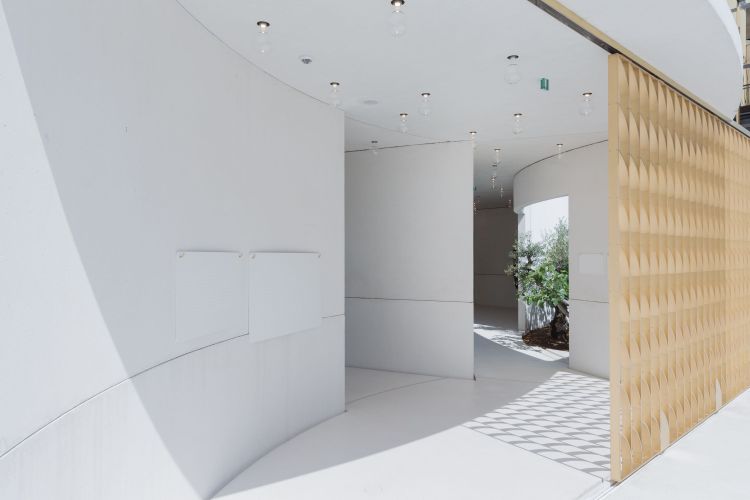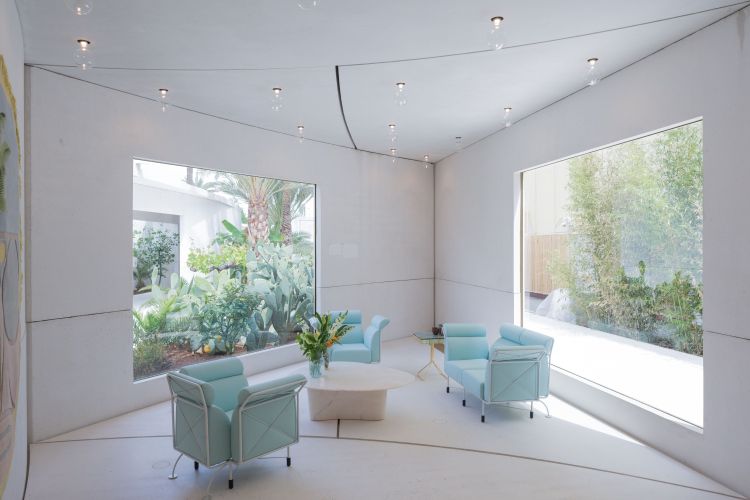Escape everyday life
The trip started rather gloomy, since I felt tricked by one of my bosses- under false pretense - into going to Milan. Nothing wrong with the theme; ‘Feeding the Planet, Energy for Life’, but the execution of the World Expo 2015 lacked a few essential ingredients like: imagination, refinement and style. I decided to opt out of the program to do something extra-curricular on my own. These are the very moments when things may start to happen.
I took the opportunity to check out the Bahrain pavilion by Dutch architect Anne Holtrop (1977). Entering through a very simple but very refined opening on the short side of a long box of white concrete, I was swept into a pleasant world of serenity, distanced from the buzz and disturbance of crowds and traffic. I can only compare the experience to the manner in which nature can overwhelm you, making you calm , guiding you into thoughts. Maybe a church making you feel humble and aware of the greatness and abilities of mankind. I was immediately mesmerized by this beautiful enclosure of meandering passages, opening up to hidden gardens bathing in sunlight. This is what great architecture can bestow upon you. I remained there for hours thinking about things important and eating organic ice-cream. It was here that I first encountered the chairs of Muller Van Severen, minimalistic objects of aluminium and planes of color. My fascination for the works of Anne Holtrop and the country of Bahrein was sparked that day.









